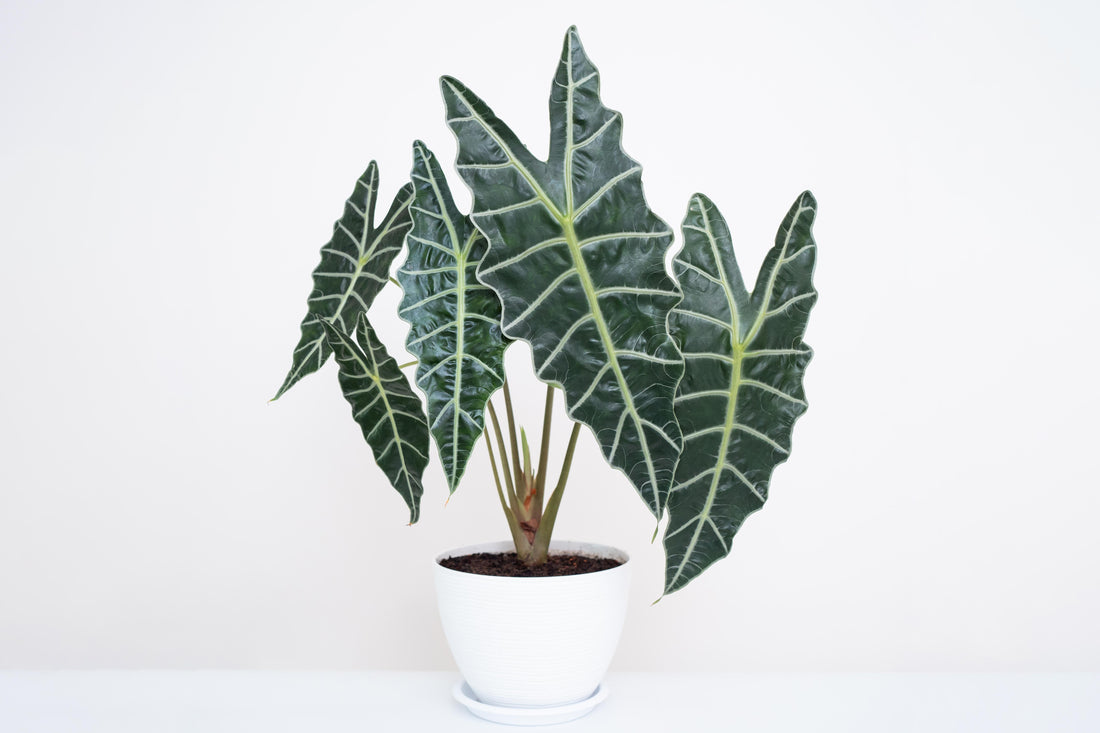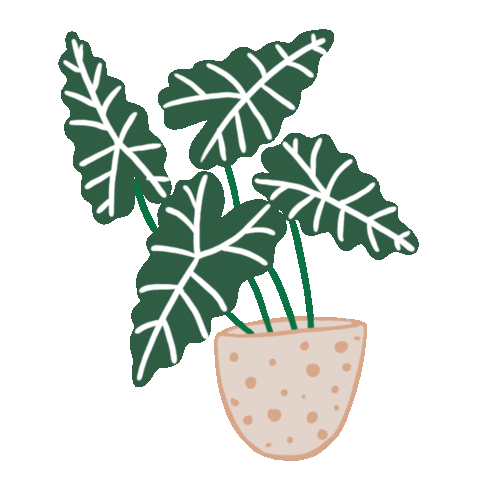
How to Tissue Culture Alocasia (Elephant’s Ear)
As a content and community manager, I leverage my expertise in plant biotechnology, passion for tissue culture, and writing skills to create compelling articles, simplifying intricate scientific concepts, and address your inquiries. As a dedicated science communicator, I strive to spark curiosity and foster a love for science in my audience.


Introduction
The foliar charm, the pattern of leaf variegation and texture, and its tolerance to limited sunlight make the Alocasias one of the most popular plants among landscape gardeners and plant collectors.
Alocasia comprises around 100 species and is a morphologically diverse genera in the family Arecaceae. The members are extensively used for several purposes. Its leaves, roots, and stem are used for edible purposes at some places, and the plant Giant Taro has many medicinal properties including antidiarrheal, antifungal, and anti-inflammatory properties.
The medicinal properties and the beauty of the plant make it highly wanted among people. The sky-high demand for these plants in commercial space has pushed scientists to come up with a better alternative to fulfill the market demand. And, tissue culture tools have been proven excellent techniques to fulfill all the aforementioned purposes.
This article presents a description of the Alocasia genera and its members and further, it will take you to the tissue culture of this plant and its procedure.
About Plant
Alocasia is a genus with tuberous perennial flowering plant species having broad leaves and rhizomes. The plants typically grow 2-6’ tall.
The leaves of plants are long-stalked, arrowhead-shaped to heart-shaped that are decorated and colorfully adorned in different sizes, from 8” to 36” long, depending on the species. The plants are commonly called Elephant's ears due to the resemblance of their leaves to big elephant ears.
They are native to tropical rainforests, secondary vegetation sites, and along streams or marshy places from India, Southeast Asia, and southern China through the South Pacific Islands (in particular The Philippines, Caroline Islands, and Indonesia) to Eastern Australia.
Alocasia has been the height of fashion for gardeners, culturists, and plant collectors for over 150 years. These plants are collected and sold at a large scale to fulfill commercial scale.
The existence of several species of the genera has been threatened due to continuous collection and habitat destruction. The pressure of protecting these plants can be relieved by using in vitro micropropagation techniques.
Tissue Culture of Alocasia
Tissue culture has been an essential biotech tool in plant labs due to its great potential for the propagation of high-value medicinal plants, manufacturing of high-quality natural products, and rapid and mass production of plants.
It’s the best alternative for the production of medicinally important plant metabolites, rapid multiplication of endangered or rare species, production of disease-free plants, and plant–genome transformation.
Many companies have used the shoot tip culture technique to produce a lot of disease-free clones of aroids since 1974 (Hartman).
Here, a procedure to tissue culture Alocasia longiloba using seeds has been covered, which is taken from the study of Abdulhafiz, F., Mohammed, A., Kayat, F., Zakaria, S., Hamzah, Z., Reddy Pamuru, R., Hamzah Z., Reduan, M. F. H. (2020). Micropropagation of Alocasia longiloba Miq and Comparative Antioxidant Properties of Ethanolic Extracts of the Field-Grown Plant, In Vitro Propagated and In Vitro-Derived Callus. Plants, 9(7), 816. doi:10.3390/plants9070816
Procedure
- Plant Material and Seed Preparation:
- Collect the fruits of A.longoliba and wash them under running water followed by rinsing in sterile distilled water to remove the dust completely. Then, separate the seeds carefully by hand and dry them at room temperature for two weeks.
- Seed Viability Test:
- Imbibe a few (100 or more) seeds in sterile distilled water for 18 h at 25 ± 2 °C to soften the tegument and activate the enzyme systems.
- Immerse the seeds in 1% tetrazolium solution (pH 7.0 ± 2) and incubate at 45 °C for 6 h in the dark condition.
- At the end of the incubation period, wash the seeds using sterile distilled water and observe under a microscope for the change in the color. Then, calculate the percentage of viability as the number of stained embryos/total no. of embryos multiplied by 100.
- Seed Surface Sterilization:
- Wash the dried seeds of A. longiloba under running tap water for 30 min.
- Surface sterilize the seeds with a concentration of 40% Clorox (sodium hypochlorite 5.25%) with a few drops of tween-20.
- Shake the seeds on an orbital shaker at 80 rpm for 20 min.
- Wash the sterilized seeds with sterile distilled water to remove a trace of Clorox and then blot dry on the sterilized Whatman filter study (90 mm).
- Pre-germination treatment: To break the seed dormancy and maximize seed germination, follow the procedure to treat seeds:
- Scarify the seeds with 30% sulfuric acid (H2SO4) for 15 min and then rinsed in distilled water for 10 min to remove the trace of acid solution.
- Surface sterilize them with 40% Clorox for 20 min and then wash with sterile distilled water three times each time for 1 min.
- Culture the seeds on a medium consisting of MS medium, supplemented with 30 g L−1 sucrose, 2.78 g L−1 Gelrite without plant growth regulator.
- Adjust the pH to 5.7 ± 0.2 prior to adding agar and then autoclaved at 121 °C at 103 kPa for 20 min.
- Incubate the cultures at 25 ± 2 °C with a 16-h photoperiod provided by cool white fluorescent lights.
- In vitro shoot induction and multiplication:
- Use the four-week-old grown in vitro seeds in this stage.
- Remove the cotyledon, hypocotyl, and the root carefully.
- Inoculate about 2–3 cm shoot tip into MS medium supplemented with cytokinin 6-benzyl amino purine (BAP), at 3-mg L−1.
- For callus induction:
- Treat the seeds with 30% sulfuric acid for 15 min followed by surface sterilization with 40% Clorox for 20 min.
- Then wash the explants with sterile distilled water to remove the trace of Clorox.
- Inoculate the disinfected seeds aseptically in a jar containing approximately 25 mL medium (MS medium supplemented with 3-mg L−1 IAA) for callus induction.
- Incubate the cultures at 25 ± 2 °C under cool fluorescent light with a 16/8 h light/dark cycle.
- For in vitro rooting:
- Culture the isolated shoots (2–3 cm) from multiple shoot cultures into glass jars containing 20 mL of MS medium supplemented with indole-3-acetic acid at 0.5-mg L−1, supplemented with 30 g L−1 sucrose and 8 g L−1 agar under 16/8 h light/dark photoperiod.
- For acclimatization:
- After 4-week, carefully take out the well-grown rooted plantlets (8–9 cm in height) from culture vessels and wash thoroughly with running tap water.
- Then, rinse the roots with water to remove the agar medium.
- Keep the plantlets in the culture room with a temperature of 25 ± 2 °C for 5 days before being transferred to the greenhouse.
- After five days, plant the plantlets into a small plastic pot size 20 × 15 cm containing a soil medium with a combination of topsoil and peat moss at a 1:2 ratio.
And, if this protocol works for you, let us know at info@plantcelltechnology.com.
For any tissue culture requirements, visit the PCT store now and get all you want to get going with your tissue culture processes.
And, if you need any suggestions and solutions to your tissue culture problems, you can use our consultation services to directly talk with our scientists.
Happy Culturing!!

Blog Categories
View by Level
Popular Blogs

New Technical Agar Vs Supreme Agar
Introduction What’s the secret element that supports and holds plants in vitro? Not sure? It’s the solidifying agent. Solidifying agents...
Read More
Get the Protocol: How to Tissue Culture Nepenthes Using Nodes and Seeds
Introduction This plant is non-vegeterian... ...and we're not kidding! Nepenthes belongs to one of the most interesting families of carnivorous...
Read MoreSubscribe to Our Newsletter







Join the conversation
Your email address will not be published. Required fields are marked